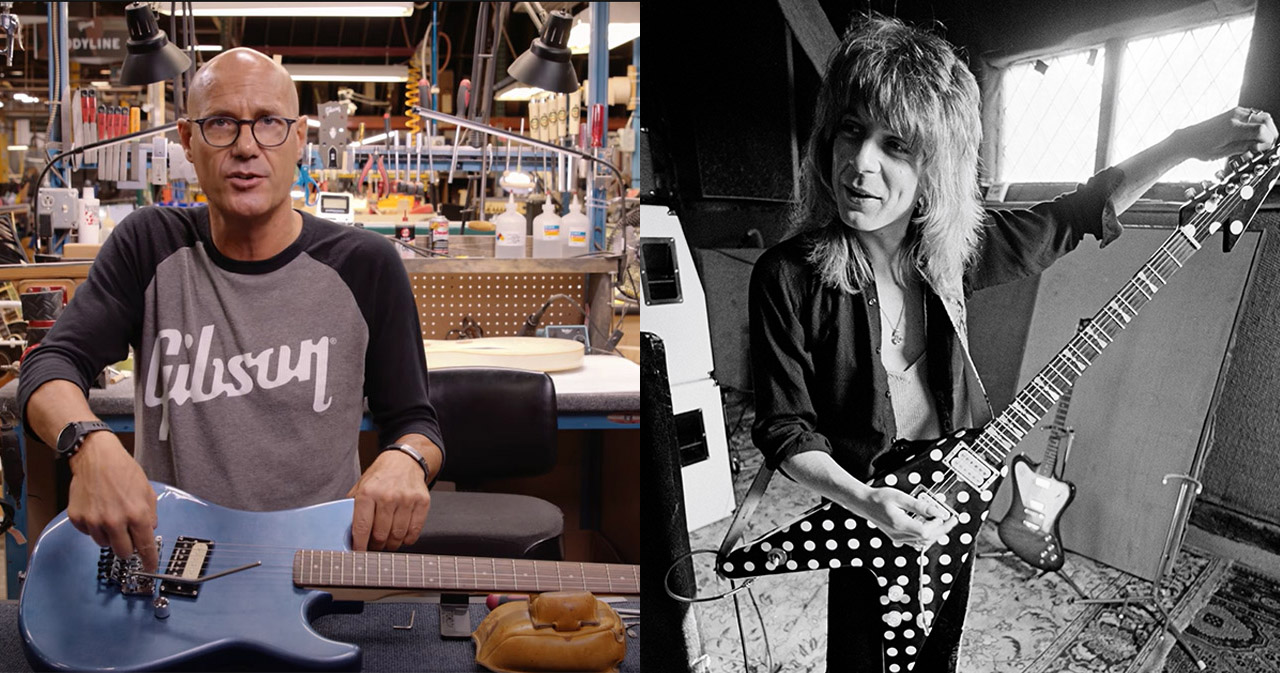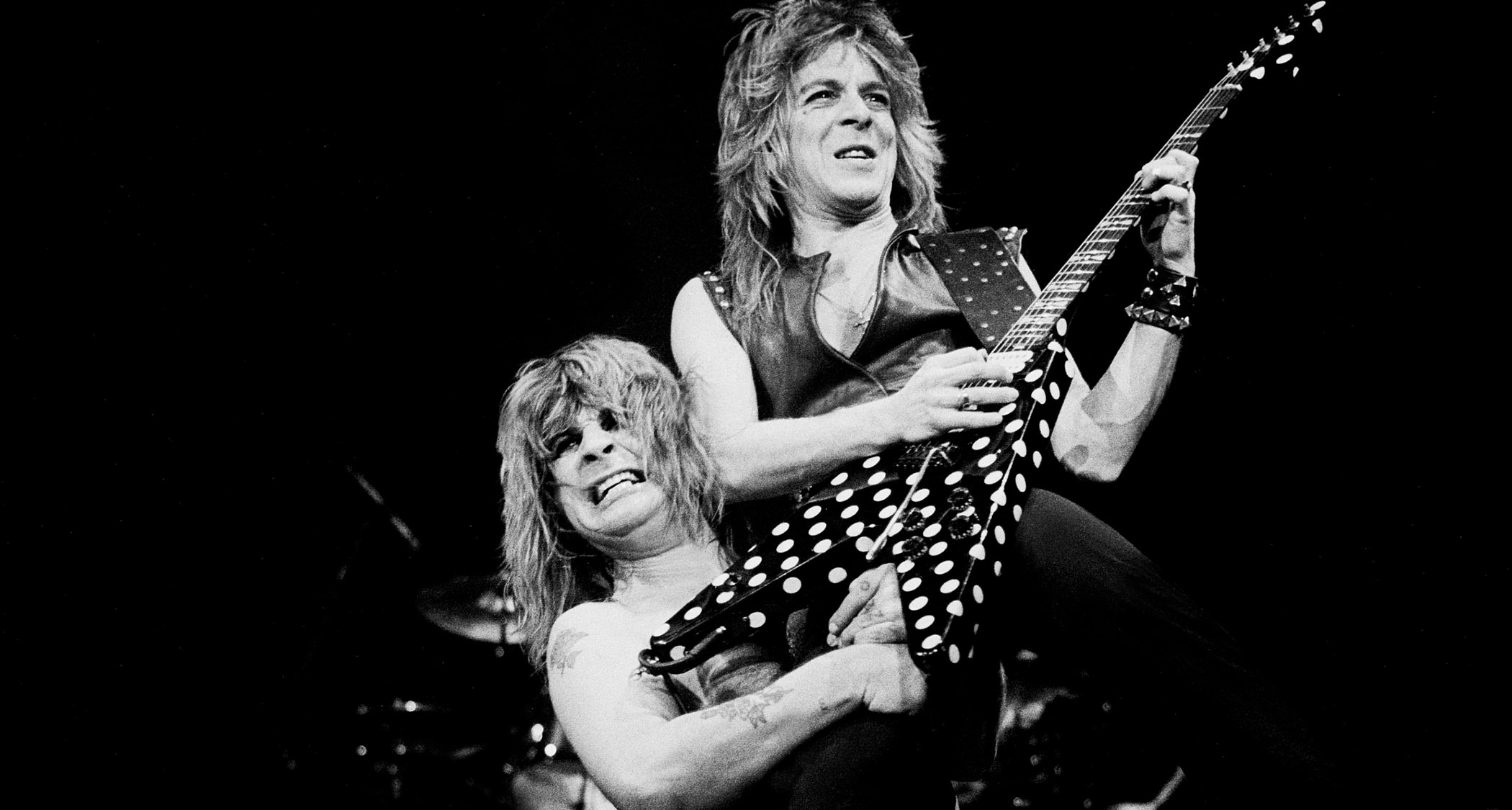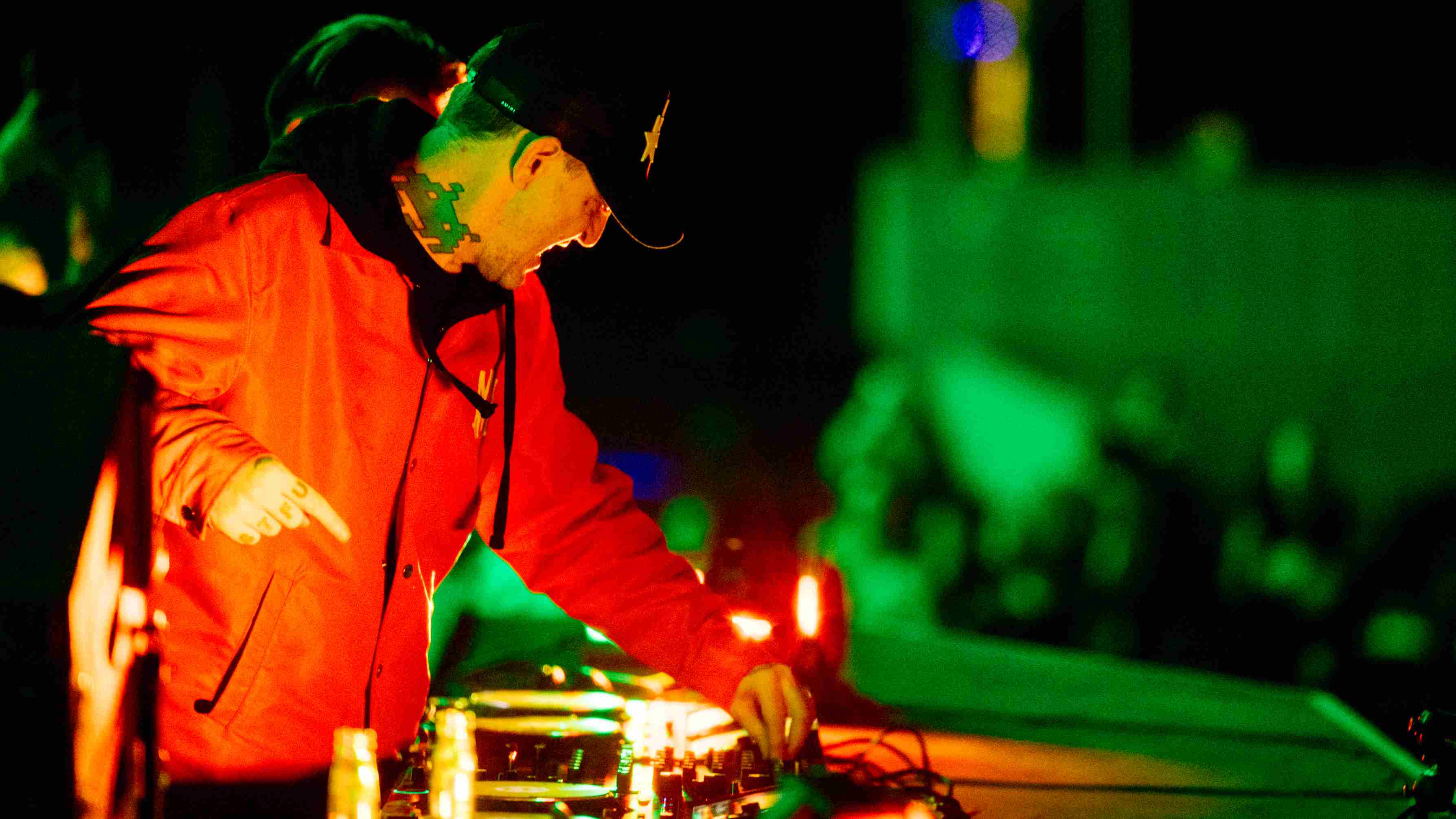“We went back to the dressing room. He said, ‘Yeah, it stays in tune great! But if you could make it a little slinkier’”: Gibson’s master luthier Jim DeCola reveals the Leo Fender-inspired mods he made to Randy Rhoads’ guitar just hours before showtime
DeCola was still only a teenager in 1982 but he had already had a reputation for being able to work magic on a tremolo system, which he duly did on Rhoads' iconic polka-dotted Sandoval V

Jim DeCola is unlikely to ever forgot the 24 January 1982. Gibson’s long-serving master luthier was then just a teenager, soaking wet and in a foul mood after battling through the Illinois winter with everyone's lunch orders, when a fateful call came in.
Speaking to Tone Shop Guitars YouTube channel, DeCola explains how it all went down, and how this call led to a job fixing up the tremolo systems on Randy Rhoads’ custom-built Sandoval electric guitar, deploying a knife-edge pivot design that was inspired by Leo Fender, and is still used to this day.
At first DeCola couldn’t make out who was on the end of the line. Then he thought it was all some kind of hoax. “I get the phone call and it’s some guy with a British accent and I could barely understand what he was saying,” says DeCola. “I can barely make out Ozzy Osbourne and thought it was just somebody pranking me. And then he said, ‘No, no, Bruce Bolen mentioned I should call you.’ … So then I’m like, 'This is for real.'”
An alumnus of CMI, which then once owned Gibson, Bolen’s name carried a lot of weight. How else would a 19-year-old get drafted in to work on Rhoads’ guitars? This was the Diary Of A Madman era, when Rhoads and Eddie Van Halen were the two hottest players in rock and metal.
But DeCola was no ordinary teenager. Despite being on the job for only three years, he had built himself a reputation for fixing up tremolo units, and that’s exactly what Rhoads needed.
Pitching up at the Rosemont Horizon [now the Allstate Arena], Illinois, DeCola was presented with Rhoads’ polka-dotted Sandoval V.
“I took the tremolo apart,” he says. “What I used to do was, I’d disassemble the tremolo and I would counter-sink the block and the plate on each side, and then de-burr the saddles. Then I would put the screws for the vibrato in a hand-drill – and I had a triangle file – and I would file a little notch so it would pivot like a Floyd Rose.”
Get the MusicRadar Newsletter
Want all the hottest music and gear news, reviews, deals, features and more, direct to your inbox? Sign up here.
But DeCola didn’t get the idea from the Floyd Rose. This was only ’82. He hadn’t even seen one at the time. He took the idea from Leo Fender’s 2-point tremolo design for G&L guitars, similar to what you see on today’s Fender Stratocasters.
DeCola had applied Leo Fender’s technique to Strats, counter-sinking the six existing screw holes but only using the two screws for the pivot points. This was the approach he used on the Sandoval. The tremolo on Rhoads’ Jackson “Concorde” – both the original and the reissues – is similarly configured.
“And then later on, Paul Reed Smith also did that hidden knife edge on his tremolo,” says DeCola. “But I did it on Randy Rhoads’ [guitars] just as a kid. I was just a kid. I didn’t know. But I was possessed, and obsessed, and all that.”
After finishing up on the Sandoval V, DeCola watched Ozzy’s band soundcheck without him. Rudy Sarzo was on bass guitar, Tommy Aldridge on drums, and there was Rhoads with the V-style that DeCola had just modded.
“They did Mr Crowley without Ozzy for soundcheck,” says DeCola. “It was awesome, just hearing the band by themselves doing that entire number.”
Rhoads was happy. His guitar now stayed in tune. But he wanted some last-minute tweaks. Even though the doors had opened, the opening act had started playing, DeCola was still at work getting the Sandoval V ready for showtime.
“We went back to the dressing room and he said, ‘Yeah, it stays in tune great! But if you could make it a little slinkier.’ So then I worked on it through the opening band,” he says. “I don’t know who the opening band was – I’d have to look that up – because I didn’t get to see them. I was working on his guitar. I was in the dressing room with him and Rudy and Tommy. Tommy’s hanging over my shoulder, ‘Hey, what ya doing now? Why you doing that?’ He was really cool.”
DeCola says everyone in the Ozzy camp was cool. Rhoads was “just a little angel playing for the Prince of Darkness”. And sure, he might have missed the opening act, which on that run of the Diary Of A Madman tour would have been cult NWOBHM act Starfighters, most famous for counting Stevie Young, now of AC/DC, on guitar, but he was there when one of the all-time classic rock photographs was taken.

DeCola was standing right behind Paul Natkin as he shot Rhoads being hoisted aloft by Ozzy. The picture [above] would be immortalised on Ozzy’s 1987 live album, Tribute. “I was like five, eight feet behind it,” he says. “I was right there!”
You can learn some of Jim DeCola's guitar setup secrets at GibsonTV. Subscribe to the Tone Shop Guitars YouTube channel here, where there is a more in-depth interview with DeCola on his work at Gibson, and conversations with Gibson Custom Shop guru Tom Murphy.
In other Rhoads news, MXR recently launched the much-anticipated Randy Rhoads Distortion+, which honours the late Ozzy guitarist with a limited distortion pedal that was co-developed with his sister, Kathy Rhoads, and features a black-and-white polka-dot finish to match his Sandoval V. Find out more at Jim Dunlop.
Jonathan Horsley has been writing about guitars and guitar culture since 2005, playing them since 1990, and regularly contributes to MusicRadar, Total Guitar and Guitar World. He uses Jazz III nylon picks, 10s during the week, 9s at the weekend, and shamefully still struggles with rhythm figure one of Van Halen’s Panama.
“A purpose-built solution for bassists seeking unparalleled sound-shaping capabilities”: Darkglass Electronics unveils the Anagram Bass Workstation – a state-of-the-art multi-effects for bass guitar with neural amp model support and a 7” touchscreen
GAK is gone: UK music store giant GAK just got bought by Gear4music for £2.4 million














